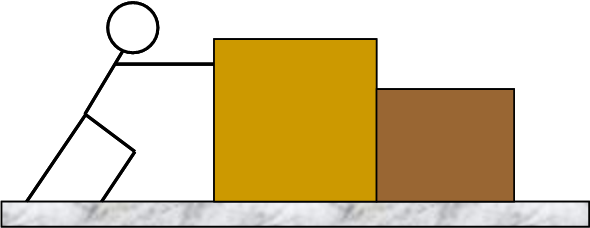If the 50 N force applied by the person were the only force acting on the rear box, then the acceleration of the box would be 50 N / 15 kg = 3.3 m/s{^}2{^}, but we know that the box is accelerating at 2 m/s{^}2{^}. To reconcile this apparent contradiction, we must remember that the rear box is not only being pushed on by the person, but also by the front box. If we again label the rear box as box 1 and the front box as box 2, we can call the force from the front box on the rear box _F_~12~. It is clear from the relative positions of the boxes that the force from the front box on the rear box would point to the left in the picture above. Thus, we can write the x-component of Newton's 2nd Law for the rear box in the form:
{latex}\begin{large}\[ F - F_{12} = m_{1}a \]\end{large}{latex}
We can solve this for _F_~12~ to give:
{latex}\begin{large}\[ F_{12} = F - m_{1} a = \mbox{50 N} - (\mbox{15 kg})(\mbox{2 m/s}^{2}) = 20 N \]\end{large}{latex}
{tip}This is equal in size (and opposite in direction) to the force _F_~21~ found in Part B, as is required by [Newton's 3rd Law|Newton's Third Law].{tip}
| 
